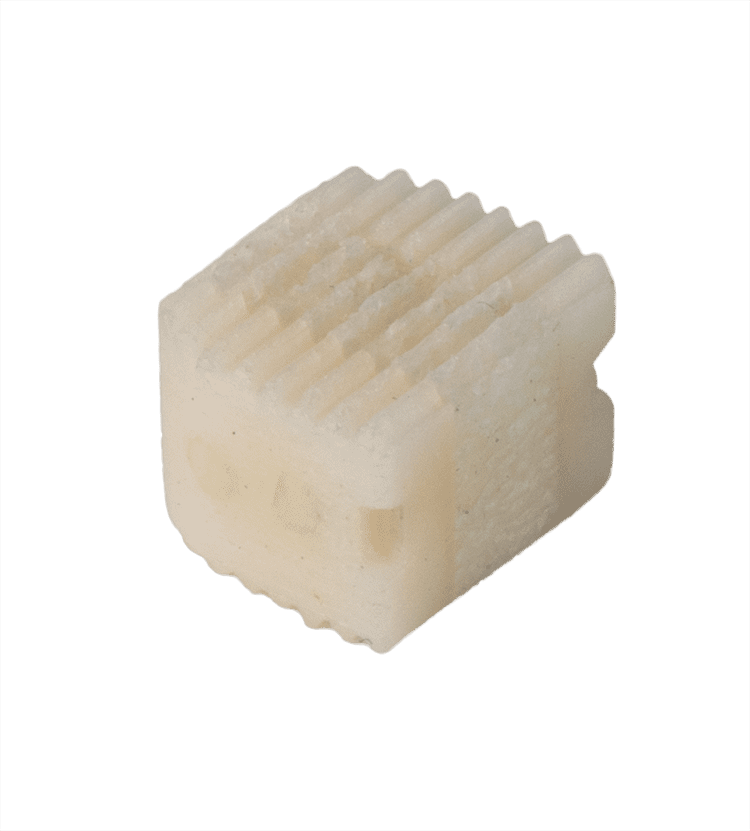LifeNet Health and DePuy Synthes have launched VertiGraft ACIS VG2, the first allograft interbody spacer specifically designed for DePuy Synthes’s ACIS instrumentation.
Comprised of a cancellous core and cortical endplates, VertiGraft ACIS VG2 is uniquely engineered to provide mechanical strength, reduce migration, and facilitate early vascularization and bone remodeling.1 It is the latest generation of the VertiGraft portfolio of allograft implants, which have a proven record of clinical effectiveness. A prospective study found 100% fusion rates after 12 months in 74 ACDF patients while facilitating bone growth and remodeling.2
“VertiGraft ACIS VG2 brings together the latest in structural allograft technology with state-of-the-art spinal instrumentation,” said Heather Pierce, General Manager of Global Spine and General Orthopedics at LifeNet Health. “The result is greater efficiency and flexibility for clinicians and effective healing for patients.”
The VertiGraft ACIS VG2 allograft is available in multiple footprints, in both parallel and lordotic configurations to optimize fit, fill, and saggital balance restoration. The cortical endplates provide the necessary strength to support the load of the cervical spine, and the cancellous center allows for early bone and vascular in–growth.1,3 In addition, the chamfered profile is designed for easy insertion. It is processed with LifeNet Health’s Allowash XG® and Preservon® technologies, providing the assurance of medical device-grade sterility with the convenience of room-temperature storage.
Designed and processed by LifeNet Health, VertiGraft ACIS VG2 is available exclusively through DePuy Synthes.
References
1. Fox B, Gopez A, Sukovich W, and Kerner M. Anterior Cervical Spine Fusion Rates Using a Frozen Laminated Composite Allograft and Plating The Internet Journal of Spine Surgery. 2005; 2(1).
2. Abla A, El Kadi H, Bost J, Maroon J, and Wert M. Allograft Composite Cortical and Cancellous Bone Graft for Anterior Cervical Fusion. Contemporary Neurosurgery: A Biweekly Publication for Clinical Neurosurgical Continuing Medical Education. 2005;27(8):1-6.
3. Salter R B. Textbook of Disorders and Injuries of the Musculoskeletal System. 1st ed. Baltimore: Williams & Wilkins; 1970.

